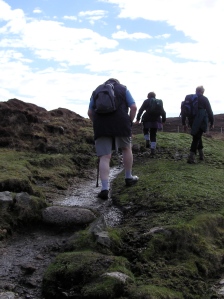Its the end of the week. Time to post prayers from my facebook page Light for the Journey. You will notice that there is a lot more to post this week. I am enlisting the help of others in posting on this page and am excited at the broadening richness of prayers and reflections this will make possible. New contributors to the page include Jamie Arpin Ricci author of The Cost of Community and founder of Litte Flowers community in Winnipeg Manitoba; Phileena Heuertz co-founder of Word Made Flesh and author of Pilgrimage of a Soul; Micha Jazz a contemplative activist in Chichester UK and a member of the Axiom Monastic Community; Bonnie Harr who posts prayers and reflections at In His Footsteps; John Birch who posts Celtic Prayers and Resources at Faith and Worship; Mary Plate DeJong who leads pilgrimages to Iona Scotland and is Forest Steward for one of Seattle’s urban forests and Mark Scandrette author of Practicing the Way of Jesus and founding director of ReIMAGINE in San Francisco.
If you would like to access these prayers and reflections each day please like the Light for the Journey Facebook page
Calm my wandering thoughts O Lord,
Quiet the turmoil of my soul.
Place your hand upon me,
Let me touch the deep abiding stillness,
In which your presence dwells.
————————–
God’s heartbeat pumps within us
and gives us life.
Gods Spirit dwells within us
and shows us truth.
God’s love grows within us
and brings us hope.
May God’s presence guide our feet
and keep us on the path of faithfulness.
——————————
It is for you we live O Christ,
Fulfill your faithful promises,
Answer our needs O Lord.
Fill us with joy and peace
And show us the light of your face.
——————————
O God your love is eternal,
It exceeds all we ever knew of you.
Your faithfulness strengthens my soul
It fills me with the goodness of life.
——————————
Bless this day
all that I might see
all that I might hear
all that I might say
Bless this day
all that I might comfort
all that I might help
all that I might guide
Bless this day
—————————-
I lay my head to rest
and in doing so
lay at your feet
the faces I have seen
the voices I have heard
the words I have spoken
the hands I have shaken
the service I have given
the joys I have shared
the sorrows revealed
I lay them at your feet
and in doing so
lay my head to rest
—————————-
Praying The Sermon On The Mount
Lord and Creator, let us embrace the costly blessings which you desire for us, blessings that confound the wisdom and strength of this world.
Teach us to be your agents of preservation in a world touched by death, and beacons of hope in a world shrouded in darkness.
Transform us into your image through the crucible of the cross, writing your mandates upon our hearts, made pure by you perfect love.
Embolden us to be your ambassadors,
Living as representatives of your holy kingdom, stirring in us your love for others, especially for those who would seek to destroy us because of you.
Make us decrease so that you might increase, as a watching world sees you, not us.
Daily we declare that your priorities are ours, even before our own needs and desires.
Every moment we live, we live for your glory—the glory of a loving Father and a just King.
Free us of any distraction, craving or anxiety that would keep us from fully following you.
For we acknowledge that everything we could possibly need is yours to give us. Remind us of our sinful brokenness and your gift of grace as we encounter brokenness in others.
You are the answer to our every question. you are the treasure that we desperately seek, and it is you who invite us into your salvation, as prodigals returning to the Father’s embrace.
Keep us upon your path of righteousness and justice, bearing the good fruit of your Spirit, for it is on you, Lord Jesus, that all hope is built,
For all of creation, now and forever more.
Amen
A prayer from The Cost of Community by Jamie Arpin Ricci
A meditation by Micha Jazz:
The prayers for my Morning office today opened with the splendid declaration ‘Let us give glory to God on high, who from His fullness have received grace upon grace’. This was a wonderful reflection and indeed provocation since I had been awake burning the midnight oil, with my head filled with cascading thoughts. Yet to be reminded and remind myself that ours, mine, is a life forged from grace and sustained by grace is indeed timely. I feel acutely my inability to find my way back into the workplace following Katey’s death four years ago – the mediation service I work with for two days a week isn’t growing and after 13 years is much as it ever as. Holding onto grace when all I want to do is implode is indeed a discipline and a constructive practice. lord in your mercy, hear my prayer. MJ
Filed under: blogs, Books, Celtic spirituality, meditation, Prayer, spiritual practices | Tagged: Bonnie Harr, Christine Sine, Jamie Arpin-Ricci, John Birch, light for the journey prayers, Mark Scandrette, Mary Plate DeJong, Micha Jazz, Phileena Heuertz, spiritual practices | Leave a comment »
























